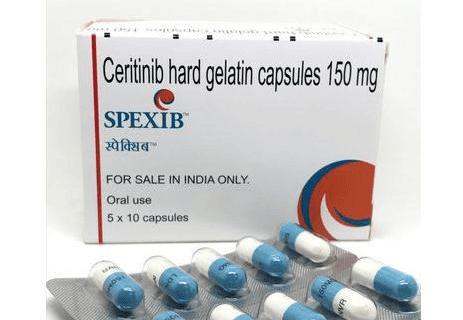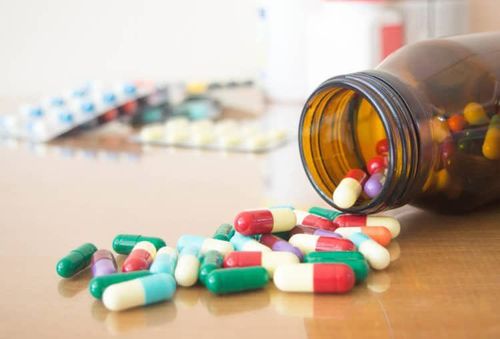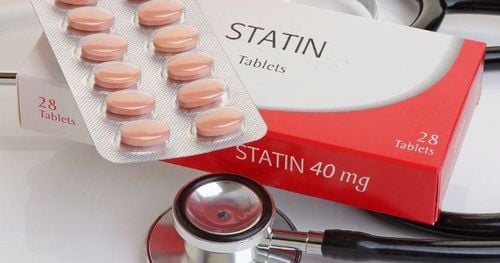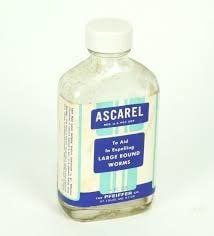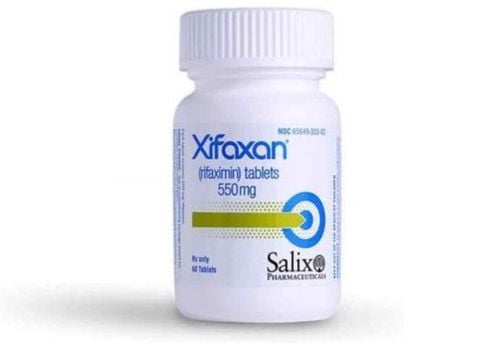This is an automatically translated article.
Celextavin is made in the form of tablets, with the main ingredients being Betamethasone and Dexlorpheniramine maleate. The drug is mainly used in the symptomatic treatment of acute and chronic allergies.
1. Uses of the drug Celextavin
What is the use of Celextavin? Celextavin has the composition of Betamethasone 0.25mg and Dexlorpheniramine maleate 2mg. In particular, Betamethasone is a synthetic corticosteroid, with very strong glucocorticoid effects (antiallergic, anti-inflammatory and immunosuppressive) accompanied by low mineralocorticoid effects (risk of Na+ retention and edema). Dexlorpheniramine maleate is an oral antihistamine with a propylamine structure with the following properties: Sedative (at usual doses due to antihistamine and central nervous system inhibition), anticholinergic, peripheral adrenal suppression.Indications for use of Celextavin: Treatment of acute and chronic allergic symptoms:
Respiratory, skin and eye allergies, eye inflammation disorders when indicated for systemic corticosteroid therapy; Severe allergic rhinitis due to rash, perennial allergic rhinitis, severe bronchial asthma; Localized dermatitis ( eczema ) or atopic dermatitis ; Serum pathology and drug reactions; Control inflammation and secretions for eye diseases. Contraindications to the use of Celextavin:
Patients with hypersensitivity to the ingredients or excipients of the drug; People at risk of urinary retention related to prostatic urethral disorders; People at risk of angle-closure glaucoma; Children under 6 years old; Relative contraindications for pregnant women and nursing mothers.
2. How to use and dose of Celextavin
Usage: Orally. Patients should take the drug in the morning (about 6-8 hours) so as not to affect the activity of the adrenal gland.
Dosage:
Adults and children over 12 years old: Start with 1-2 tablets/time x 4 times/day. Should take the drug after eating and before going to bed, maximum 8 tablets/day; Children 6 - 12 years old: Take 1⁄2 tablets/time x 3 times/day. If an additional daily dose is required, it should be taken at bedtime, up to a maximum of 4 tablets per day. Overdose:
Betamethasone overdose: Symptoms of chronic corticosteroid overdose include sodium and water retention, calcium and phosphorus mobilization with osteoporosis, increased appetite, nitrogen loss, hyperglycemia, and increased sensitivity to infections, decreased tissue regeneration, adrenal insufficiency, increased cortical activity, muscle weakness, neuropsychiatric and neurological disorders. For treatment, it is necessary to monitor serum and urine electrolytes, paying attention to maintaining sodium and potassium balance. In case of chronic toxicity, stop the drug slowly, treat electrolyte imbalance if necessary; Overdosage of Dexchlorpheniramine maleate: Symptoms are convulsions (common in infants and children), cognitive disturbances and coma. The main treatment is symptomatic treatment in the hospital. Missed dose: If you forget to take a dose of Celextavin, you should take it as soon as you remember. If it is almost time for the next dose, skip the missed dose and take the next dose at the scheduled time.
3. Celextavin side effects
When using Celextavin, patients may experience some side effects such as:
Common: Potassium loss, sodium retention, water retention, development of Cushing's syndrome, menstrual irregularities, growth inhibition of the fetus in utero and infancy, revealing latent diabetes, impaired glucose tolerance, increased need for insulin and hypoglycemic agents in diabetics, muscle weakness, osteoporosis, loss of muscle mass, abscess aseptic, atrophy of the skin; Uncommon: Mental euphoria, mood swings, insomnia, major depression, Glaucoma, cataracts, peptic ulceration and may lead to perforation and bleeding, pancreatitis, abdominal distention, esophagitis ; Rare: Atopic dermatitis, angioedema, urticaria, benign intracranial hypertension, hypotension, shock-like, anaphylactic or hypersensitivity reactions; Frequency not known: Somnolence or somnolence (particularly during the new administration), mucosal dryness, mydriasis, accommodation disturbances, tachycardia, urinary retention, orthostatic hypotension, confusion balance, dizziness, impaired concentration, memory loss, ataxia and tremor (common in the elderly), confusion, hallucinations, hypersensitivity reactions (rash, eczema, rash) hemorrhage, skin pruritus, urticaria, edema, quince edema, anaphylaxis), blood effects (neutropenia, thrombocytopenia, leukopenia, hemolytic anemia). When experiencing side effects of Celextavin, patients should immediately inform their doctor. Most side effects can usually be reversed or minimized by reducing the dose (this is often used instead of stopping the drug). In addition, taking the drug with food can limit indigestion or gastrointestinal irritation.
In addition, patients on long-term treatment with Celextavin may need to limit sodium intake and supplement potassium during dosing. Also, because corticosteroids increase protein catabolism, it may be necessary to increase protein intake if patients are on prolonged treatment with Celextavin. The use of calcium and vitamin D may reduce the risk of corticosteroid-induced osteoporosis. Patients with a history of or risk factors for peptic ulcers should be treated with anti-ulcer drugs (proton pump inhibitors, H2-receptor antagonists or antacids). For patients taking glucocorticoids, anemia should be related to the risk of gastric bleeding.
4. Be careful when using Celextavin
Some notes for patients to remember before and while using Celextavin:
Elderly patients taking Celextavin are likely to have orthostatic hypotension, dizziness, drowsiness, chronic constipation (due to the risk of chronic constipation). paralytic ileus) or a swollen prostate gland; Patients taking Celextavin are at risk of liver failure, severe renal failure due to drug accumulation; Patients should absolutely avoid alcohol and drugs containing alcohol during the time of using Celextavin; Patients with congestive heart failure, hypertension, diabetes, recent myocardial infarction, epilepsy, glaucoma, osteoporosis, hypothyroidism, peptic ulcer, psychosis should be cautious when taking Celextavin; Be careful when driving or operating machinery if taking Celextavin because the drug has a side effect of causing drowsiness; With caution when using Celextavin in pregnant and lactating women, consult your doctor before deciding to take the drug.
5. Celextavin drug interactions
Drug interactions related to Betamethasone components:
Corticosteroids induce liver enzymes, so may increase the risk of forming metabolites of Paracetamol that are toxic to the liver. Therefore, combined use of Betamethasone with Paracetamol in high doses or long-term can lead to hepatotoxicity; Concomitant administration of Betamethasone with tricyclic antidepressants may increase corticosteroid-induced psychosis; Betamethasone may increase blood glucose levels if taken concomitantly with oral antidiabetic agents or insulin; Concomitant administration of Betamethasone with Glycoside digitalis increases the risk of arrhythmias or digitalis toxicity associated with hypokalemia; Phenobarbital, rifampicin, phenytoin or ephedrine drugs may increase the metabolism of Betamethasone, reducing their therapeutic effect; Estrogen may alter the metabolism and protein binding of Betamethasone, reducing the clearance, therapeutic effects and toxicity of Betamethasone; Concomitant use of Betamethasone with coumarin anticoagulants may increase or decrease the anticoagulant effect; The combined effect of nonsteroidal anti-inflammatory drugs with alcohol or alcohol with Betamethasone may increase the risk of formation or severity of peptic ulcers; Betamethasone may increase blood levels of salicylates. Drug interactions related to Dexchlorpheniramine maleate:
Do not combine Dexchlorpheniramine with alcohol because it increases the sedative effect of H1 antihistamines. The risk of impaired concentration and reduced alertness can be dangerous if the patient is driving or operating machinery. Therefore, avoid drinking alcohol or alcoholic beverages while taking the drug; Note when combining Dexchlorpheniramine with other CNS depressants (analgesics of the morphine family, benzodiazepines, barbiturates, clonidine, antidepressant with sedative effect, hypnotics, sedatives) neuroleptics, anxiolytics, methadone): Increased risk of CNS depression. Risk of impaired concentration and alertness which can be dangerous if the patient is driving or operating machinery; Note when combining Dexlorpheniramine with Atropin and drugs with Atropin-like effects (anticholinergic anti-vibration drugs, imipramine-class antidepressants, antispasmodics with atropine-like action, disopyramide): Side effects of atropin group such as urinary retention, dry mouth, constipation. When taking Celextavin, patients should strictly follow the doctor's instructions to ensure the best treatment effect and avoid the risk of adverse side effects.
Vinmec International General Hospital is one of the hospitals that not only ensures professional quality with a team of leading medical doctors, modern equipment and technology, but also stands out for its examination and consultation services. comprehensive and professional medical consultation and treatment; civilized, polite, safe and sterile medical examination and treatment space.
Please dial HOTLINE for more information or register for an appointment HERE. Download MyVinmec app to make appointments faster and to manage your bookings easily.




